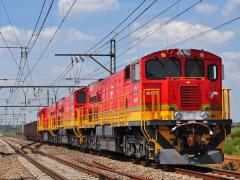East London Terminal (ELT) handled its first soya beans export vessel when the St Columbia started loaded 30 000 metric tons of the legume, destined for Malaysia last week.
According to a statement released by ELT, the terminal’s performance heralded an average of 207 tonnes loaded per hour against a target of 90 tonnes per hour.
Minimal interruptions over the planned six days of loading enabled ELT to significantly exceed its daily loading target.
The terminal’s agricultural volumes have increased this year after the grain elevator was temporarily closed for almost two years because of the severe decline in agricultural bulk volumes regionally.
Terminal manager Naliya Stamper said ELT had collaborated with both industry, local and regional stakeholders to unlock economic opportunities for the region.
“While we started with maize and wheat vessels early on in the year, it’s a big achievement for us to handle soya bean exports as they have not previously formed part of our agricultural exports,” Stamper said.
The grain elevator, which is also one of the largest silos in the country with a capacity of 66 000 tonnes, became financially constrained and the decision was taken to temporarily close the facility until business opportunities improved.
However, the terminal had continued to discharge grain using a direct operating model, involving cargo that is loaded onto trucks and taken to an external facility immediately.
“The export of the first consignment of soya beans in the Eastern Cape is a true milestone. We are growing from strength to strength with each passing month, as we aim to return to what we are known for globally,” Stamper said.
She added that a trial of soya beans exports was previously undertaken at the terminal in the early eighties, but it was unsuccessful.
South Africa has in the recent past increased its agricultural production with the introduction of policies to attract new seed technology for soya beans, further attracting investment.
According to Grain South Africa, the breeding and technology levy was introduced into the market to incentivise the development of new cultivars and technology.
Yield increases are expected as new cultivars will be more adapted to local growing conditions and with producers’ knowledge in terms of local production practices increasing as well.













